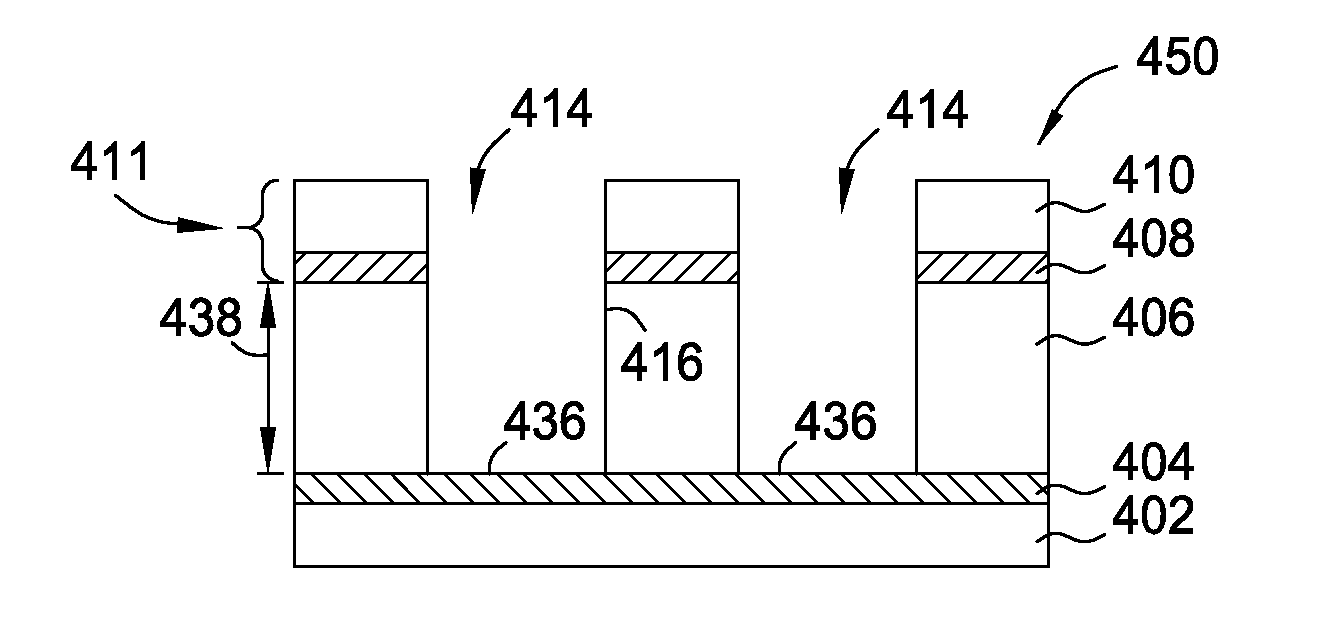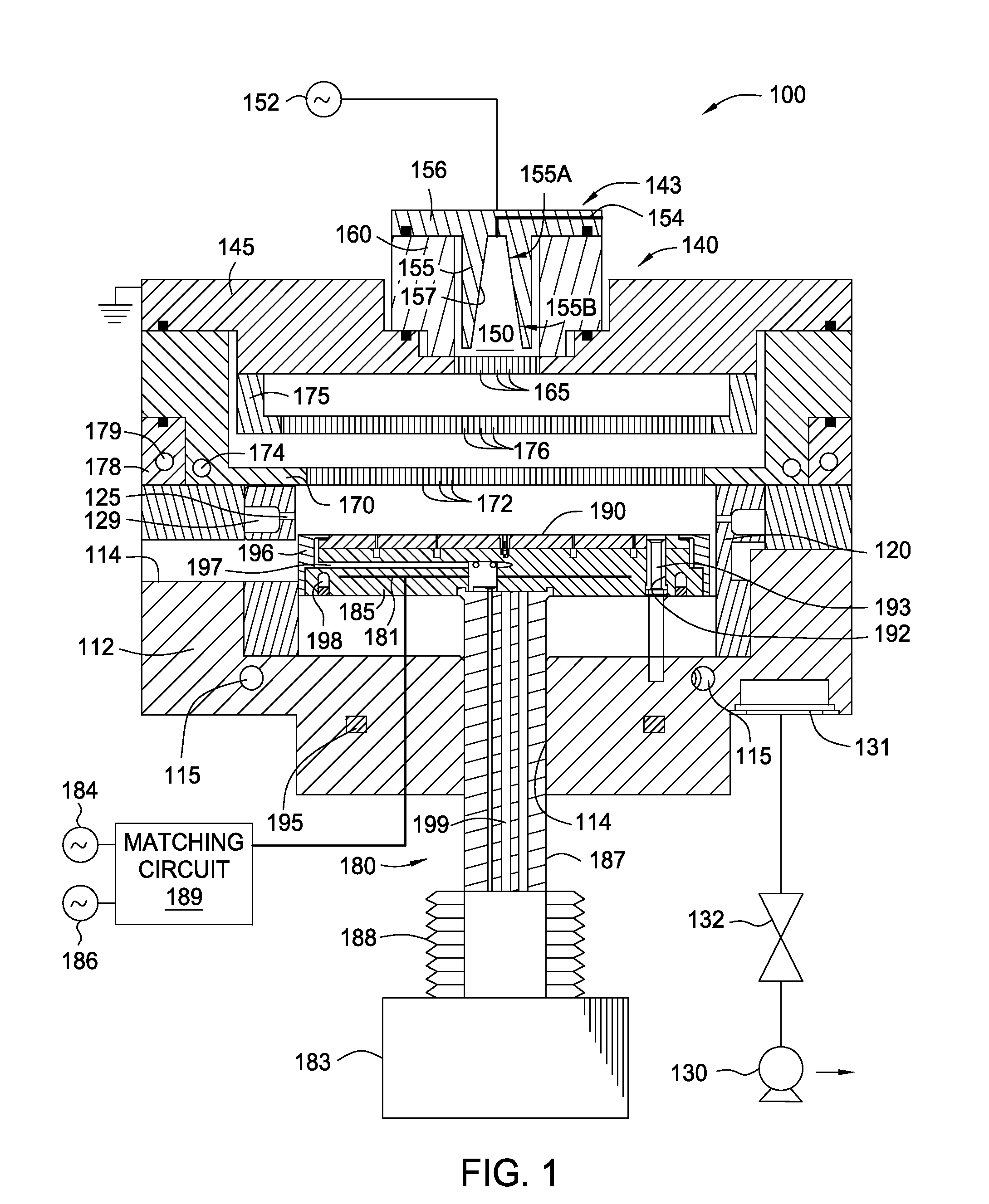Methods for forming features in a material layer utilizing a combination of a main etching and a cyclical etching process
a technology of etching and material layer, applied in the direction of basic electric elements, electrical discharge tubes, electrical apparatus, etc., can solve the problems of poor selectivity during etching, bowed, distorted, toppled, or twisted profiles of etched structures, and poor line integrity of formed structures
- Summary
- Abstract
- Description
- Claims
- Application Information
AI Technical Summary
Benefits of technology
Problems solved by technology
Method used
Image
Examples
Embodiment Construction
[0020]Embodiments of the present invention provides methods for etching a material layer for high aspect ratio features formed on a substrate for semiconductor devices, with high selectivity and accurate profile control. In one embodiment, the etching process includes using a first step of a main etching process along with a second step of slow cyclical etching process to gradually etch the material layer until the underling substrate is exposed. The slow cyclical etching process may assist controlling the etching selectivity and providing a relatively accurate etch stop endpoint at the interface so as to provide a good profile control for the features formed in the material layer. In one embodiment, the etching process may be utilized to form features, trenches, or vias in a contact dielectric layer for a contact structure for semiconductor devices.
[0021]The term “contact structure” as used herein refers to a layer of material that includes a metal silicide that can form part of a ...
PUM
 Login to View More
Login to View More Abstract
Description
Claims
Application Information
 Login to View More
Login to View More - R&D
- Intellectual Property
- Life Sciences
- Materials
- Tech Scout
- Unparalleled Data Quality
- Higher Quality Content
- 60% Fewer Hallucinations
Browse by: Latest US Patents, China's latest patents, Technical Efficacy Thesaurus, Application Domain, Technology Topic, Popular Technical Reports.
© 2025 PatSnap. All rights reserved.Legal|Privacy policy|Modern Slavery Act Transparency Statement|Sitemap|About US| Contact US: help@patsnap.com



